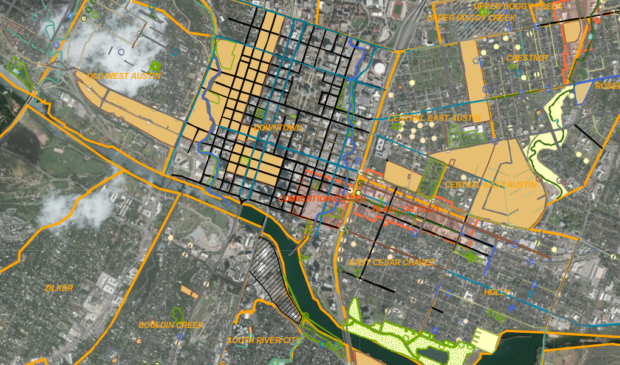CodeNEXT: What’s the plan, here?
Monday, May 21, 2018 by
Jack Craver After seeing the city spend five years and $8.5 million on CodeNEXT, some members of the Planning Commission are worried that the final product will be little more than a “plan to plan.”
Currently, the commission is in the process of making recommendations about what the different zoning categories available under the new code should allow. Last week, for instance, commissioners debated what size lots should be allowed in R2C, one of several residential zones crafted by city staff and a team of planning consultants.
However, the commission has not yet recommended where R2C, or any other zoning category, should apply. Some commissioners have suggested that that should not be part of the CodeNEXT process. Instead, they have suggested that the new zoning map will be crafted incrementally by city staff through “small area plans.”
However, city planning staff is also in the middle of overhauling the small area planning process. The new process is aimed at planning around corridors and activity centers, in contrast to the old neighborhood planning process based on planning recognized neighborhoods or subdivisions.
In a recent memo outlining what the new process might look like, Planning and Zoning Director Greg Guernsey estimated that at current staffing levels, the city could only get one to two small area plans done a year. With an additional five full-time employees, Guernsey reckons he could do two to three plans.
In an email to Chair Stephen Oliver, which he shared with the Austin Monitor, Commissioner Greg Anderson said that the city can’t afford to wait that long. Delaying the mapping process would mean delaying the construction of much-needed housing in the coming years.
Citing the number of centers and corridors that staff has identified as anchoring potential small area plans, Anderson wrote, “(W)e’re looking at well north of half a century to get to where we hope to be in the next year or two.”
Anderson told the Monitor that the staff memo was a “huge, huge deal for everybody involved in the planning process.”
Jerry Rusthoven, assistant director of the Planning and Zoning Department, said that there wouldn’t be nearly as many small area plans as Anderson suggested, and that it therefore likely wouldn’t take that long.
But Anderson doesn’t believe that even a substantially shorter timeline is acceptable if it means that it could be many years, if not decades, before new zoning is applied to certain parts of the city.
“We’re going to fail miserably in all of our housing goals if we don’t map for all of the (housing) capacity needed,” he said.
In light of the sobering timeline presented by staff, commissioners Trinity White and James Shieh have shelved a resolution that called for a “plan to plan” approach to mapping the new code.
White, however, said that she is still not convinced that the commission should go through the process of applying new zoning to every area in the city. Instead, she suggested crafting a Future Land Use Map that more generally recommends the types of development patterns that the city would like to encourage in a given area of town.
This map, said White, would “set the tone” for neighborhoods throughout the city and send a message to future land use commissions, city staff and developers about the types of projects that are likely to be embraced in an area.
Oliver largely agrees with Anderson that the city may be “kicking the can down the road” if a new zoning map is not included as part of CodeNEXT. He unsuccessfully advocated starting the mapping process at a commission meeting last Monday.
Oliver also emphasized in an interview with the Monitor that whatever zoning is approved as part of CodeNEXT is not set in stone. There will be changes to zoning in the coming years, he said, including requested zoning changes from property owners or developers.
Curious about how we got here? Check out the Austin Monitor’s CodeNEXT Timeline.
Map of Austin’s Small Area Plan recommendations courtesy of the city of Austin.
The Austin Monitor’s work is made possible by donations from the community. Though our reporting covers donors from time to time, we are careful to keep business and editorial efforts separate while maintaining transparency. A complete list of donors is available here, and our code of ethics is explained here.
You're a community leader
And we’re honored you look to us for serious, in-depth news. You know a strong community needs local and dedicated watchdog reporting. We’re here for you and that won’t change. Now will you take the powerful next step and support our nonprofit news organization?



